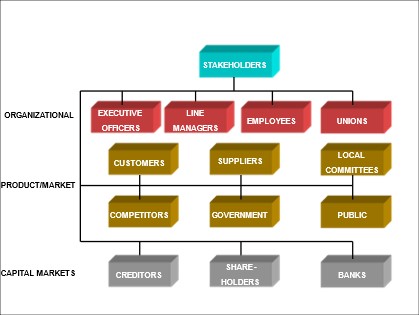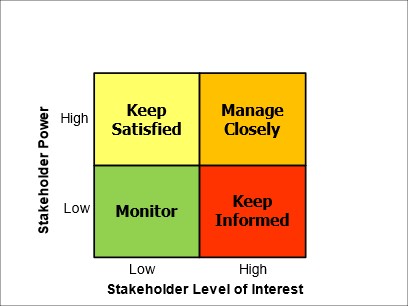By Harold Kerzner, Ph.D. and Elissa Farrow, Ph.D.
June 7, 2023
Every year, numerous articles are written that describe new approaches to management and leadership practices. The applications for the new approaches cover all industries and situations. The focus of this paper is to discuss some of the challenges facing the linkage between artificial intelligence (AI), project management, and stakeholder relations management.
The Benefits of AI
[1] Part of this paper has been adapted from Harold Kerzner, Project Management: A Systems Approach to Planning, Scheduling and Controlling, 13e, 2022, Section 10.6, Stakeholder Relations Management; John Wiley Publishers.
The worldwide project management community of practice has recognized how AI will be able to improve the implementation of project management. Some of the expected project management benefits from AI include:
- Elimination of mundane tasks or repetitive jobs
- Elimination of human errors
- More risk mitigation options
- 24/7 availability
- Better data analysis
- Improvements in project staffing
- Unbiased decision-making
- Reduction in the time needed for decision-making
- Elimination of emotions in decision-making
- More information available for project decision-making
- Better understanding of the root causes of some problems
- Lowering of project costs
- Better tracking of assumptions, constraints, and trends
- Better use of “what if” scenarios
- Better tracking of the enterprise’s environmental factors

Challenges with the Growth of Project Management
During the past few years, several factors have emerged that impact project and program management approaches. Some of these project management factors can be treated as “challenges” and include:
- Strategic Competency: Project management is now recognized as a “strategic competency” necessary for the growth and survival of the organization rather than just another career path position. Some companies define strategic competency as one of the four or five most important career paths for the future, and project management falls into this shortlist.

- Strategic Projects: Project management no longer focuses on just traditional or operational projects that begin with well-defined requirements and a business case. We are now using project management practices for strategic projects that involve significant levels of design, creativity, innovation, and R&D. Many of these projects begin with just an idea and the scope of the project evolves as the project is implemented.
- New Documentation: The new types of projects require changes in the forms, guidelines, templates, and checklists that established our project management comfort zone for years. Many ‘documents’ are now being systematized with automated decision trees and electronic signoffs to match the complexity of the organization.
- Flexible Methodology: The new types of projects have identified the need to replace or combine the more rigid waterfall methodology with more flexible approaches such as Agile and Scrum or hybrid variants of these.
- Increased Risks: The risks and impact of the VUCA environment (Volatility, Uncertainty, Complexity, and Ambiguity) have forced us to reconsider how we manage projects. For example, the COVID-19 pandemic put employees under more stress, changed the way some companies make decisions, and required some decisions to be made faster and with incomplete information.
- More Information: There is an increasing volume of available information and data and new techniques such as Big Data stores and AI to support project problem-solving and decision-making.
These challenges force organizations to consider new and better ways to maintain stakeholder relations management practices. AI may have the greatest impact on how we collaborate with stakeholders. Most people understand the challenges imposed by these six bullets and seem to agree that AI will increase the capabilities of project managers (PMs). AI will not fully replace the PM, nor will AI provide the creativity and innovation that humans possess (yet). However, AI will become a significantly important tool for project managers to use, especially for problem-solving and decision-making. How easy or difficult will it be to get stakeholders to support AI practices?
The Stakeholder Support Challenge
The benefits of using AI are certainly well-elaborated in the literature along with the applications to project management. Everyone expects AI to assist in making better decisions on projects. However, there is still one very important element that needs to be considered, and is rarely discussed in articles:
How will stakeholders react to projects where project problem-solving and decision-making use AI?
Not all stakeholders will have the same knowledge concerning AI practices as do the PMs. The critical issue is in determining the best way to use and quote the use of AI in projects when there are several external stakeholders. At first, a number of stakeholders may be resistant to the use of AI within their projects, or they may simply be opposed to the use of the recommendation made by AI.

Who are the stakeholders in artificial intelligence?
Exhibit 1 identifies typical categories of stakeholders. Stakeholders may be directly or indirectly involved throughout the project as part of problem-solving and decision-making or function simply as observers. Stakeholders can shift from a passive role to becoming active and key members of the project team and participate in critical decisions.
Key stakeholders in artificial intelligence include:
Organizational
- Executive officers
- Line Managers
- Employees
- Unions

Exhibit 1. Typical Categories of Stakeholders
Product/Market
- Customers
- Suppliers
- Local Communities
- Competitors
- Government
- Public sector
Capital Markets
- Creditors
- Shareholders
- Banks
When a company manages projects focusing on internal stakeholders, such as the organizational stakeholders in Exhibit 1, there is usually a stronger company commitment to the use of AI and how problem-solving and decision-making will be handled. This is due to a range of factors including the initial decision process in relation to AI adoption and a clearer understanding of its scope, data storage, and security treatments.
On small or traditional projects, project managers generally interface with the project sponsor as the primary stakeholder and any impacted stakeholders. The sponsor usually is assigned from the organization that funds the project. Getting agreement on the use of AI may not be difficult. But the larger the project, the greater the number of stakeholders with which you must interface. The situation becomes even more potentially problematic if you have many stakeholders, geographically dispersed, all at different levels of management in their respective hierarchies, each with a different level of authority, and language and cultural differences. Trying to interface with all these people on a regular basis and make decisions, especially on a large, complex project is very time-consuming. The situation becomes even more problematic when several of the stakeholders are opposed to the use of AI.
Getting Agreements
Lining up all the stakeholders in a row and getting them uniformly to agree to all decisions is more wishful thinking than reality. You may discover that it is impossible to get all the stakeholders to agree, and you must simply hope to placate as many as possible at a given point in time. Your company may have long-term objectives in mind for this project, and those objectives may not necessarily be aligned with each stakeholder’s objectives. How should you handle a situation where the output from AI supports your strategic objectives but not those of other stakeholders? How should you respond when the output from AI supports stakeholder objectives but not your company’s objectives?
Another form of agreement involves developing a consensus on how stakeholders will interact with each other. It may be necessary for certain stakeholders to interact with one another and support one another regarding sharing resources, providing financial support in a timely manner, and sharing intellectual property. While all stakeholders recognize the necessity for these agreements, they can be impacted by politics, economic conditions, and other enterprise environmental factors that may be beyond the control of the project manager. How should the PM manage stakeholders when disagreements revolve around whether AI should be used?
It is important to realize that not all stakeholders may want the project to be successful. This will happen if stakeholders believe that, at the completion of the project, they may lose power, authority, hierarchical positions in their company, or in the worst case even lose their job. Sometimes these stakeholders will either remain silent or even be supporters of AI results that they know can lead to failure.
It is very difficult to identify stakeholders with hidden agendas. These people can hide their true feelings, be reluctant to share information, or even share the wrong information intentionally. There are often no telltale or early warning signs that indicate their true belief in the project or the use of AI. However, if the stakeholders are reluctant to approve scope changes, provide additional investment, or assign highly qualified resources, this could be an indication that they may have lost confidence in the project.
Stakeholder Mapping
On large, complex projects with a multitude of stakeholders, it may be impossible for the project manager to properly cater to all stakeholders. Therefore, the project manager must know who the most influential stakeholders are and who can provide the greatest support for using AI on the project. Typical questions to ask related to AI might include:
- Which stakeholders are powerful and would support using AI?
- Who will have or require direct or indirect involvement in decisions made by AI?
- Who has the power to stop the project if they are uncomfortable with decisions made by AI?
- Who may require more, or less, information than others concerning AI?

Not all stakeholders are equal in influence, power, or authority to make decisions or support AI decisions in a timely manner. It is imperative for the project manager to know who sits on the top of the list as having these capabilities.
It is important to remember that stakeholders can change over the life of a project, especially if it is a long-term project. Also, the importance of certain stakeholders can change over the life of a project and in each lifecycle phase. The stakeholder list is therefore an organic document subject to change.
Stakeholder mapping is most frequently displayed on a grid comparing their power and their level of interest. For simplicity’s sake, stakeholders can be mapped into four groups:
- Manage closely. These are high-power, interested people who can make or break your project. You must put forth the greatest effort to satisfy them. These people must be aware of the benefits of AI and hopefully support its use on your project.
- Keep satisfied. These are high-power, less-interested people who can also make or break your project. These stakeholders should have at least a cursory understanding of AI and its benefits. You must put forth some effort to satisfy them, but not with excessive detail that can lead to boredom and total disinterest. They may not get involved until the end of the project approaches.
- Keep informed. These are people with limited power but who are keenly interested in the project. They may or may not understand AI and its implications. They simply want to be informed and possibly participate in some decisions.
- Monitor only. These are people with limited power who may not be interested in the project unless a disaster occurs. Provide them with some information but not with too much detail such that they will become disinterested or bored. These people may not be concerned about AI or its benefits and limitations.
Typical stakeholder mapping is shown in Exhibit 2. PMs may include the names and titles of each stakeholder in each of the cells.

Exhibit 2. Typical Stakeholder Mapping
Early Stakeholder Engagement is Key
Stakeholder engagement is when you meet and engage with the stakeholders and determine their needs and expectations. Engagement is multi-modal and, in these post-pandemic times, many project teams are getting back into physical engagement processes rather than working or engaging virtually. Ideally given the growth in AI utilization, it is important that stakeholder engagement take place at the start of the project to understand their position on the use of AI and their comfort of using it as part of the decision-making and problem-solving process. As part of this engagement, you must:

- Understand them and their expectations.
- Ensure the ethical AI and safety protocols and assurance structures are clear.
- Understand their needs, including their support or resistance to the use of AI, and their desire to participate in problem-solving and decision-making.
- Value their opinions.
- Find ways to win their support on a continuous basis while considering their position on AI.
- Identify any stakeholder problems early on that can influence the project and resist support for AI.
Even though stakeholder engagement follows stakeholder identification, it is often through stakeholder engagement that we determine which stakeholders are supporters, advocates, neutral, or opponents of the use of AI in decision-making. This may also be viewed as the first step in building a trusting relationship between the project manager and the stakeholders.
In Conclusion
AI releases this year such as ChatGPT and the explosion in its use have demonstrated the need to form clear objectives and criteria to determine what the appropriate level of AI use in project decision-making and problem-solving needs to be. Decisions in many organizational contexts are often based on concepts of power and control. Those who influence or ‘speak’ the loudest, may get heard. Deciding on the level of AI utilization will require agreement and transparency with impacted stakeholders. Moreover, if a decision is offered that impacts human life, what process is needed to validate this (we’ll cover this subject in a future article).
If stakeholder trust in the use of AI cannot be developed, it may be necessary to consider making decisions or solving problems in the project without using AI practices. This will become less possible in larger organizations that determine AI use as an efficiency provider. Companies must have a clear ethical position on giving stakeholders a choice at the onset of a project as to whether AI can or should be used and if so, to what extent. Early stakeholder engagement is critical. Engaging stakeholders early enables adequate time to prepare and commences to move people up the engagement curve from hearing the message to understanding their place in the verification and validation of the decision and then owning the outcome.
About the Authors
He has authored or co-authored more than 60 textbooks/workbooks on project management, including multiple editions of his seminal works. His books include Project Management: A Systems Approach to Planning, Scheduling and Controlling; Project Management Metrics, KPIs and Dashboards; Project Management Case Studies; Project Management Best Practices: Achieving Global Excellence; The Future of Project Management; Using the Project Management Maturity Model; and Innovation Project Management.
Dr. Kerzner holds an MS and Ph.D. in Aeronautical and Astronautical Engineering from the University of Illinois and an MBA from Utah State University. He taught engineering at the University of Illinois and business administration at Utah State University, and for 38 years taught project management at Baldwin-Wallace University. A testament to Dr. Kerzner’s profound influence on the field is the establishment of the Kerzner International Project Manager of the Year Award. This prestigious award, presented annually by the Project Management Institute (PMI) which recognizes outstanding project managers who have demonstrated exceptional leadership, innovation, and contributions to the project management profession.





